Affiliate disclosure: This post may contain affiliate links. Please see our Privacy Policy.
The best portable power stations can be hard to find, as there are literally dozens of fly by night brands that have come onto the market lately. Sorting through all the options can be daunting, but we’ve done the research to find the absolute best portable power stations and solar generators on the market today.
Whether you’re looking for emergency backup power for your home or apartment, or a way to charge devices and run small appliances while camping or RVing, these are the best options for portable off grid power.
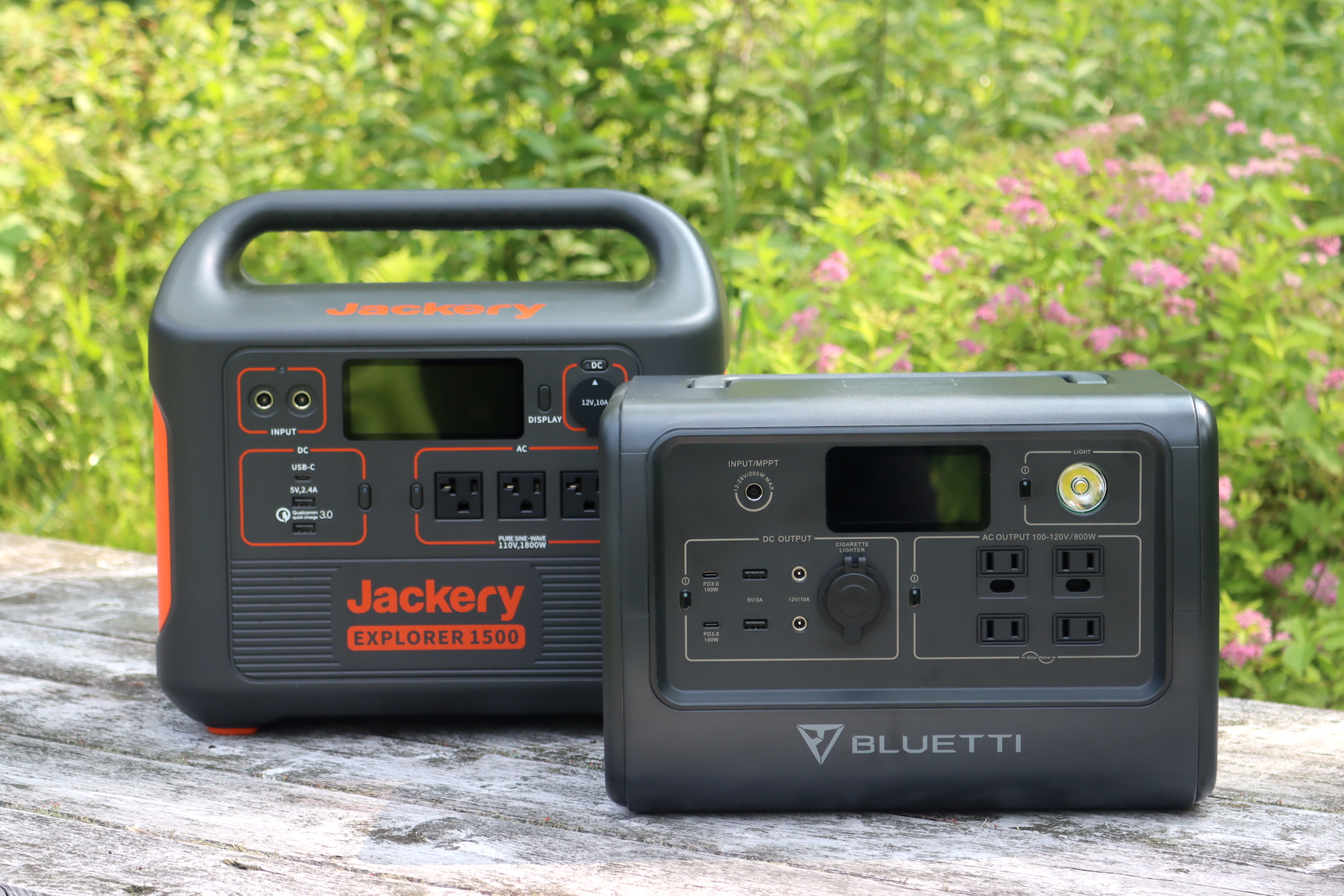
We’ve always had a keen interest in off grid living and battery backup power, but as widespread power outages (and planned brownouts) become more common, there’s never been a better time to invest in a little energy independence. Our first year as a young couple together, the power went out in our small home for more than a week at a time…not once, but twice. First an ice storm in January knocked out power (including heat and water) for nearly 10 days, and then a hurricane took out power again for more than a week mid summer.
We learned just how often the power goes out, both in the summer thunderstorm season and winter blizzards. Out West, where my parents live, people are facing roving blackouts, especially in the summer months during peak utility usage and wildfire season.
Ten years ago, we moved to an off grid home in rural Vermont and we’ve never really looked back. We’ve spent the last decade living in a solar and wind powered home on a remote 30 acres here in Vermont. At this point, we know the ins and outs of solar power and managing a battery backup system.
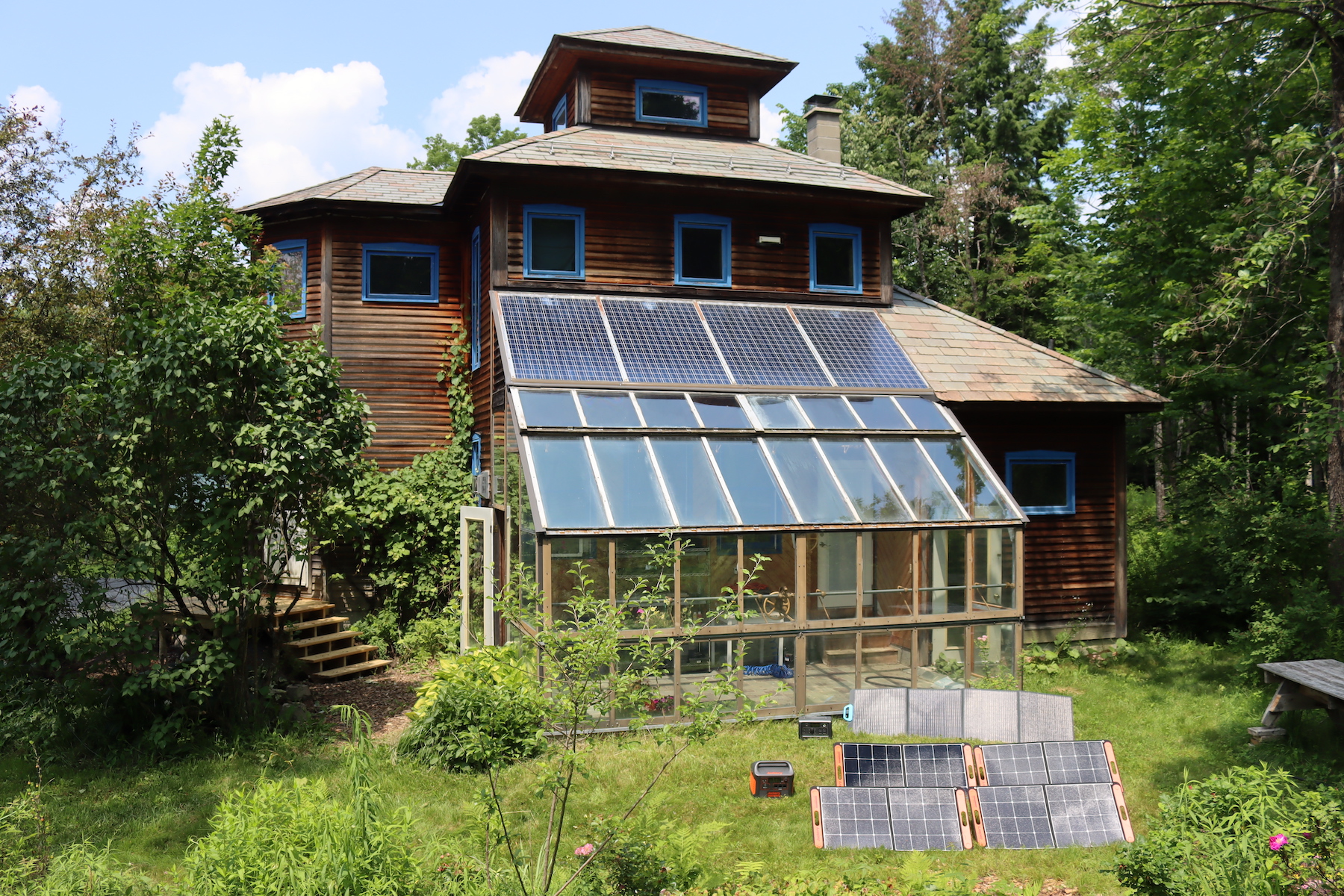
We also know that this life isn’t practical (or even desirable) for most people, but the option to have a small bit of power independence tucked away in the back closet is always a good idea.
You can charge devices in a power outage, keep critical systems like CPAP machines and freezers running, and keep the kids entertained during an otherwise stressful time. For camping, it makes even more sense, and it’s amazing how a little bit of portable electricity can help take the edge off of “roughing it” and turn the experience into something that’s memorable and fun for the whole family.
We’re already familiar with the ins and outs of solar power, as well as all the specifications for batteries and panels on the market today. So we’ve written this beginner’s guide to portable power stations to help you sort through all the technical jargon and find the very best solar generators for your unique situation.
I’m going to cover all the major brands on the market today, including:
If there’s another brand that you’re looking at and I don’t mention it, please let me know in the comments and I’ll look into adding it into this review.
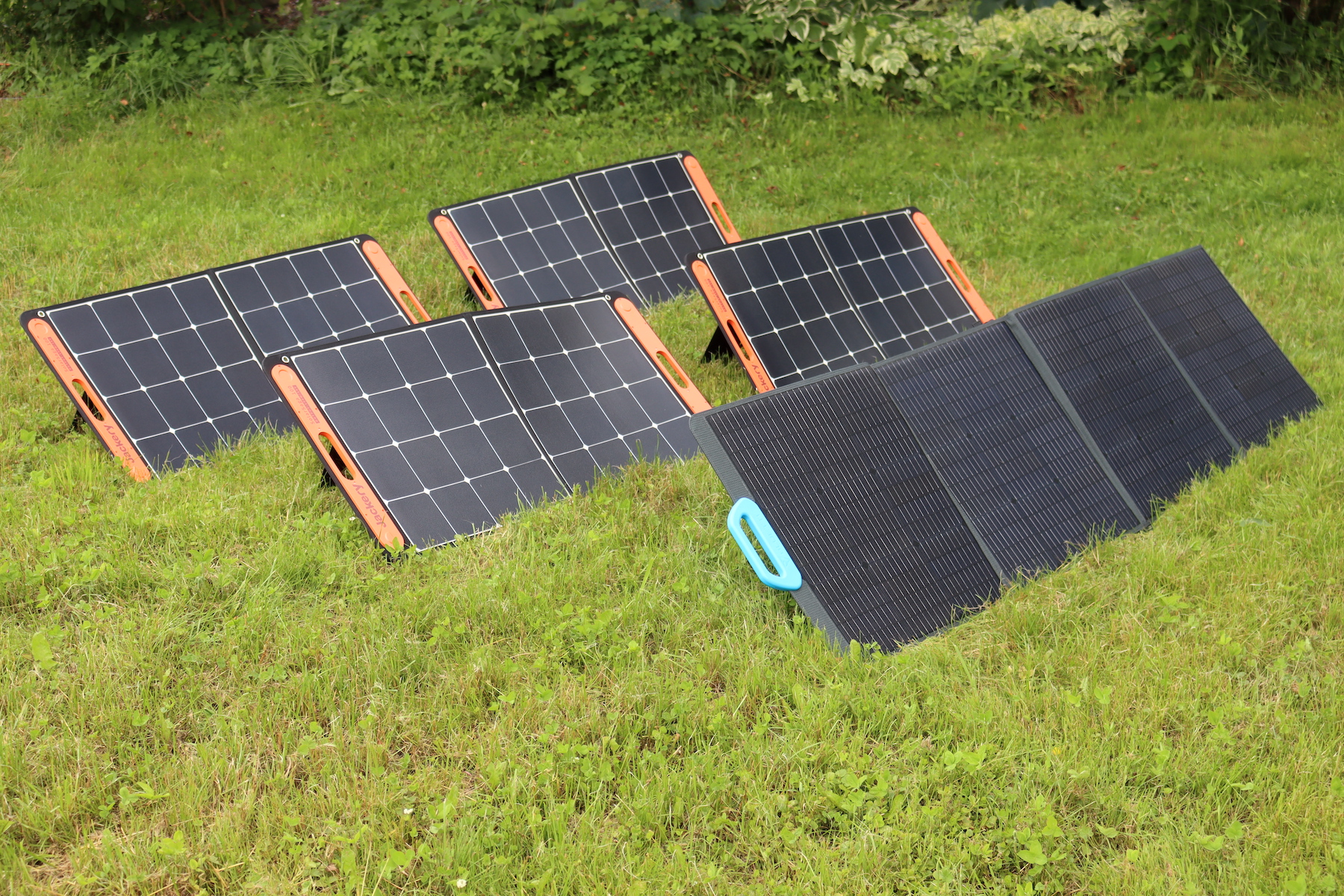
Best Portable Power Stations
This guide to portable power stations is long, and in depth, and I do encourage you to read it so you understand the pros and cons of each system. That said, I know people busy, and sometimes you just need a quick answer at your fingertips.
- Best Budget Portable Power Station: Bluetti EB3AWith 600 Watts, it can still handle most small appliances, and it’s one of the least expensive options. It can charge a phone 15 times, run a fan, laptop or CPAP for 6 hours, or simply keep a light bulb going for up to 24 hours.
- Best Lightweight Portable Power Station for Backpacking: Jackery Explorer 240 At Just 6.5 lbs, this is one of the lightest portable power stations, but it still has enough juice to charge devices and run small electronics.
- Best Portable Power Station for CPAP: Bluetti EB55 With enough power to run a CPAP for 8 to 10 hours, this small power station will let you sleep through the night even when the power’s out. It can be recharged during the day for extended outages. If you’re looking for an option for multi day camping trips, choose the Jackery Explorer 2000 below which can run a CPAP all week without worrying about recharging, or it can run all your camping gear and recharge on solar panels during the day.
- Best Portable Power Station for Car Camping: Jackery Explorer 2000 Pro If you’re car camping, but you still need something lightweight enough to move about the camp site, go with the Jackery 2000. It has plenty of power for multi day outings, but it’s still portable enough that a strong child can pull it in and out of the car. (My 8 year old can handle it on her own.)
- Best Portable Power Station for RVs: Bluetti AC200Max (Includes TT-30 RV Plug) This expandable power station can hook right into your RV’s TT-30 plug and it has enough juice to power things most of the day. You can add on B300 expansion batteries if you need more power, which can keep you going all week (especially with solar panels to recharge).
- Best Portable Power Station for Emergency Backup Power: Bluetti AC200Max with B300 expansion batteries. The AC200Max can put out 2200 Watts, which is enough to power most small household appliances, but it’s still portable enough to be moved by a single person (62 lbs). You can add expansion batteries, extending the watt hours from 2,048Wh to 8,192Wh. If you need more juice, look into Bluetti’s AC300, which is expandable up to 12,288 Watt Hours.
I know, now you’re wondering what the worst options are. In general, the worst options are the mass market cheaply produced models that have flooded Amazon recently. I’ve been contacted by half a dozen of them for product reviews, but it seems like the companies go out of business within a few months due to poor reviews and performance. (They then re-brand under a new name, change the case color of the power station and start selling it again.)
When you’re buying a battery, something that you need to stand by in an emergency, it really is best to opt for a name brand even if it costs 10% more. Poorly made lithium batteries, especially the NMC type, can be a safety hazard, and it’s just not worth it to buy a cut rate model.
For the most part, buying direct from the supplier is going to get you the best deal, and ensure that your warranty is in place and valid. In many cases, buying from a 3nd party (like Amazon) voids the warranty. If you are on a budget, your best option is not to buy a cheap knock off model. That’s just a waste of money.
If you are going to buy used, I’d suggest only buying used Lithium Iron Phosphate (LiFePO4) power stations (Bluetti or Anker). They’re rated for 2500 to 3500 charges, last for decades and they’re difficult to damage even with extreme use. I do not suggest buying used Lithium NMC power stations (Jackery, Goal Zero, and many older Ecoflow models) as those are only rated for about 500 charges, or 2 to 4 years of regular use and they degrade rapidly if they’re abused by continuously running them down to zero charge.
(More on different portable power station battery types in a minute.)
In terms of the main brands of portable power station, I don’t think there’s any reason to ever choose Goal Zero. Their offerings are very similar to Jackery, but they’re heavier, more expensive and take nearly 10 times as long to charge. Opt for comparably sized options from Jackery instead.
What is a Portable Power Station?
A portable power station is basically a miniature off grid system in a box. It includes batteries, of course, which store power…but it’s not the same as a simple battery. You can’t do the same thing with a random golf cart battery or even the off grid battery bank on my house. There are other components needed to make it work.
All power stations include three different components to allow the power to not only be stored, but also recharged and discharged regularly.
The power station also has a charge controller, that regulates the amount of power coming into the batteries and allows you to charge the power station with AC electricity from a wall outlet, or DC power from a carport or solar panel. All of it is converted to DC power for battery storage.
Lastly, the power bank includes a built in inverter which takes the DC power stored in the batteries and converts it to the same AC power that comes out of a standard wall outlet.
Those three components give you the three main measures of a portable power bank (Watts, Watt Hours and Charging Speed/Input Watts).
The size of the batteries will determine the total watt hours of the system. The max rated output of the inverter determines the total watts you can output at any given time (to run large appliances or multiple devices at once). The capacity of the charge controller determines how fast you can charge the batteries, and recharge times vary from 1 hour to 16 hours, for the same size power bank depending on the quality/efficiency of the charge controllers used.
What Can You Run on a Portable Power Bank?
Depending on the size of the power bank, you can charge just about any small device (phone, laptop, etc) and run almost any household appliance. Power stations are rated in watts, and range from about 240 to 3,000 watts total output.
The total watt output will tell you what devices a power bank can run. Here are some of the most common small appliances:
- Phone Charger: 5 to 30 Watts
- CPAP Machine: 30 to 60 Watts
- Small Table Fan: 40 Watts
- Box Fan: 100 Watts
- Laptop Computer: 50 to 100 Watts
- Desktop Computer: 200 Watts
- PS4: 100 to 300 Watts
- Coffee Maker: 550 Watts
- Refrigerator: 350 to 800 Watts
- Blender: 500 to 750 Watts (up to 1500 for high powered models)
- Toaster: 500 to 1800 Watts
- Electric Kettle: 800 to 1500 Watts
- Well Pump: 800 to 1,000 on average, with some going up to 5,000 Watts
- Portable Air Conditioner: 1000 to 1400 Watts
- Electric Oven: 800 to 1000 Watts
- Electric Pressure Cooker: 800 to 1200 Watts
- Portable Induction Burner: 600 to 1800 Watts
- Table Saw/Miter Saw/Circular Saw: 1800 to 3500 Watts
To determine how many total Watts you need in a power station, add up all the devices you hope to run simultaneously. Think about what you actually need to run at the same time, versus what you can run back to back.
For example, if you’re cooking a camping breakfast and you want to use an electric kettle for coffee (800W to 1500W) and an induction cook top for eggs and bacon (600W to 1800W), that’s a lot of watts at the same time (1400W to 3300W total). But if you make coffee first (it only takes a few minutes), and then run the cook top, you don’t need anything nearly so large.
If your needs are simple and all you want to do is charge your phone, run a CPAP machine and a fan, then the smallest low wattage power stations will do. Something in the 200 to 600 watts range will work just fine and keep all of those running simultaneously.
Anything that requires a heating element, including cook tops, electric ovens and pressure cookers, will require a much larger power station. The same goes for anything with a compressor, namely a refrigerator or portable air conditioner. Those will require a 1500 to 2000 watt power station.
If you’re doing construction work in a remote location, and you’re trying to run a table saw or mitre saw, you’ll need a very large power station, in the 3000 Watt range.
How Long Can You Run a Portable Power Station?
The second question is how long can you run a device on a portable power station, and that’s determined by the Watt Hours. Most portable power stations are somewhere in the 250 to 3000 watt hour range, in terms of total capacity.
In simple terms, if you have a 1000 Watt Hour power station, then you can run a single 100 watt appliance for 10 hours. In reality, it’s a bit less than that, and most power stations can only be drawn down to 85 to 90% of their rated Watt Hours, especially if you’re using high watt appliances.
You would need a 240 to 480 watt power station to run a CPAP machine for 8 hours, but you’d be better off with something 20% larger just to be sure. (And considerably larger if you want it to run more than 8 hours.)
Some devices are constantly pulling a straightforward amount of power, while others, like a refrigerator, electric oven or induction cook top, turn on and off to maintain a temperature. The actual electricity used there will vary. (On average though, a standard household refrigerator uses about 4,000 watt hours every 24 hours.)
If your planning for a short term outage, or just using appliances sporadically during a camping trip, you wont need nearly as many watt hours as if you’re trying to power your whole house for several days.
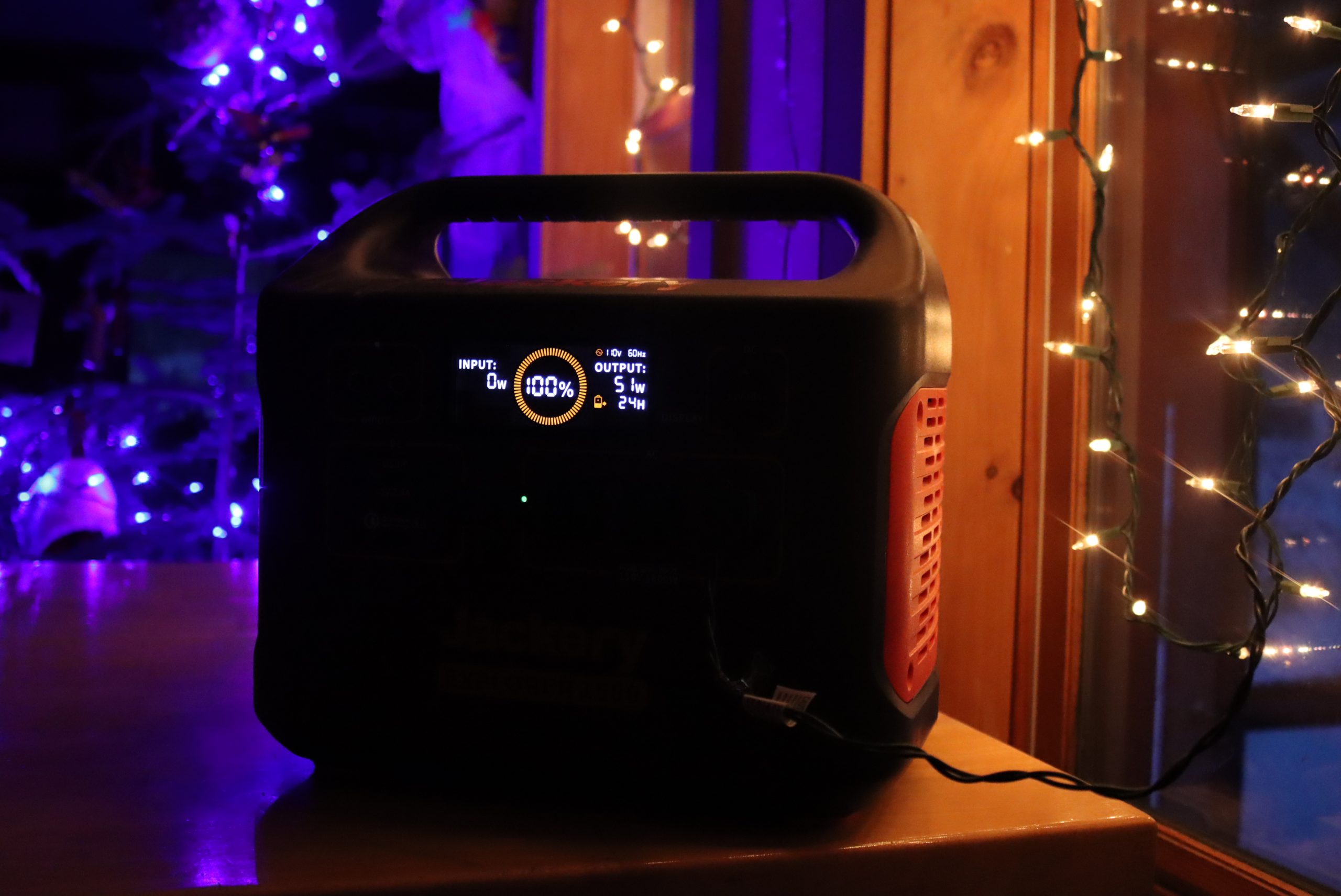
How to Choose a Portable Power Station
There are many considerations when choosing a portable power station. Size, in terms of actual weight, but also maximum Watt output and Watt Hours will help you determine the actual model you need. Beyond that, the battery type is the most important factor when choosing the best portable power station manufacturer. Different battery chemistries have different characteristics, and it really does matter.
In some cases, you’ll want to consider the power output types (AC, USB-A, USB-C, etc.) as well as the different ways in which the power stations can be charged. If you just need AC plugs for common appliances, and you’re just going to be charging the panels with an AC wall input or portable solar panels, then all of these manufacturers will work equally well. If you need a specialized plug, such as a TT-30 for RVing or a DC5521 Output for specialized equipment, then the output options might matter as well.
Lastly, charging speed is a huge differentiator between manufacturers. Some portable power stations have fast charging and can go from 0 to 100% in less than an hour, even for relatively large capacity batteries. Others would take 16+ hours for the same charge, and everywhere in between. (The average is usually around 2-3 hours, depending on the power station size.)
You’d think that slower charging models would be a lot less expensive, but in most cases, they cost about the same and just hide the fact that they charge slowly somewhere in the fine print. All things being equal, it makes sense to choose the faster charging models when they’re at a similar price point.
Weight
Each of these portable power station is in fact portable, but some are easily carried, while others must be wheeled around if they need to be moved. The smallest models are only 5 or 6 lbs, but their power output is limited to 200 to 300 Watts (or around 200 to 300 Watt Hours). That means they can charge phones half a dozen times, or power a few lights for an evening, but not much else.
Larger models can weigh as much as 100 lbs and power a whole house for several days if you’re conservative with usage. They come as big as 3000 Watts, and around 6000 Watt hours of battery life. These are overkill for most people, unless you really need to power larger appliances (induction cook tops, etc.) or are a devoted full time RVer.
For the most part, the mid-range models have a good mix of portability and utility. They’re generally around 20 to 40 lbs, and can power most common appliances as well as charge just about any device.
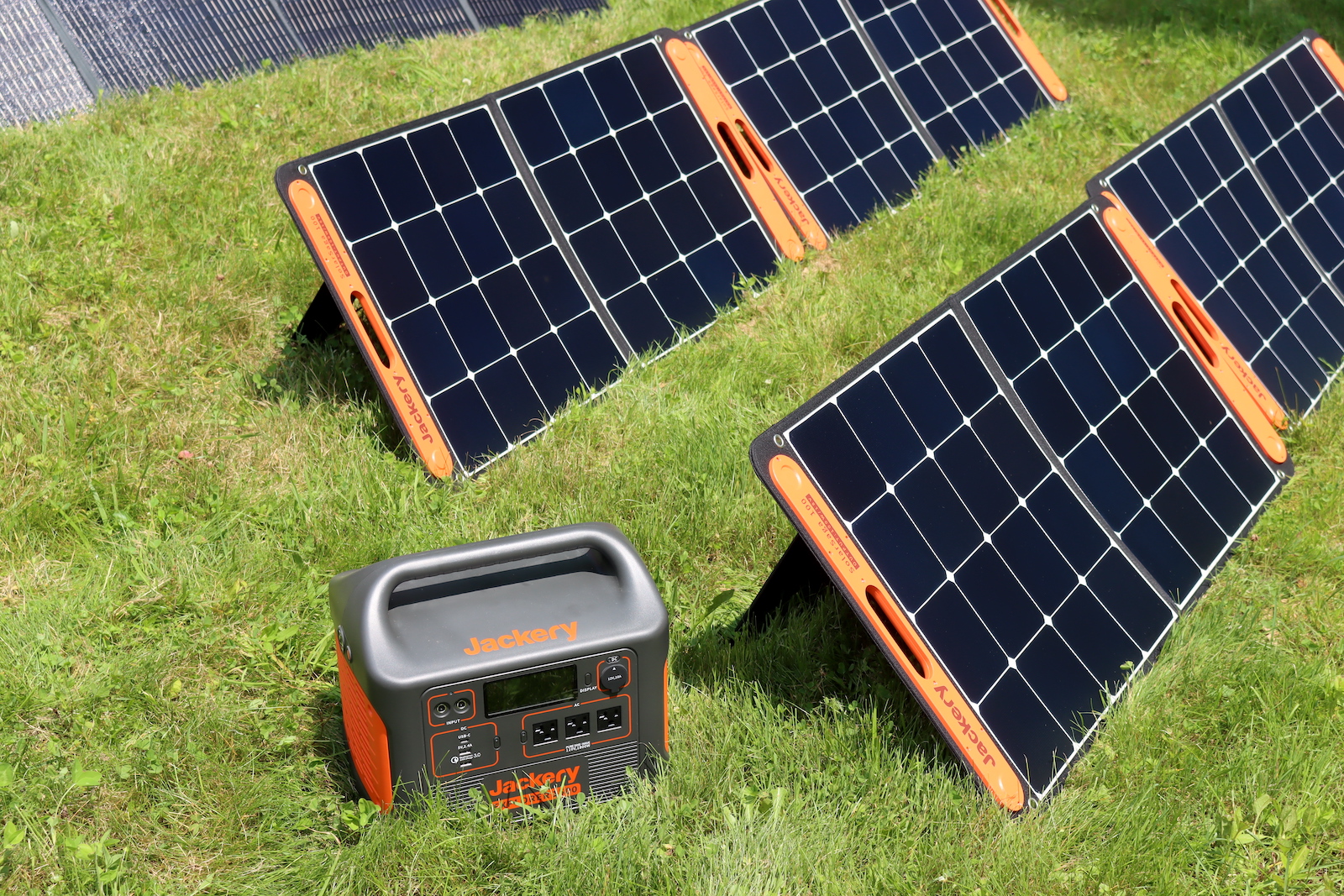
Total Watts
The total watts determine what type of appliances you can run or charge from any given battery. If you’re charging a phone or laptop battery, their requirements are minimal. If you hope to run larger appliances, or multiple things at once, you’ll need a power station that provides substantial output at once. That’s what the “Total Watts” is measuring – how much power can go out at any given moment.
Some power hungry devices like microwaves, hair dryers, or induction cook tops can pull 1400 to 1600 Watts…and you couldn’t run those on smaller power stations. A 1000 Watt unit can run 93% of household appliances, and a 1500 Watt unit takes you up to 95% of common devices (adding in power hungry pressure cookers, waffle irons, etc). A 2000 Watt unit will cover almost anything (short of really high output electric stoves and full size clothes dryers), but generally something that big is used not to power one large thing, but multiple smaller appliances at once.

Total Watt Hours
While total watts measures the maximum output at any given moment, Watt Hours measures the actual battery capacity. In theory, a portable power station with 1000 Watt Hours can power a 100 Watt light bulb for 10 hours, or a single 1000 Watt appliance for 1 hour. (It’s not quite that straightforward, and when you use the power at a lower rate, you actually end up with more watt hours than if you pull it all at once with a big appliance, but for the most part the total Watt Hours converts pretty well into a certain number of watts for a certain number of hours.)
When looking at total watt hours, think about what you might need to run off the battery and for how long. A small battery may charge your phone dozens of times, but it might only run a cooking appliance for a few minutes (even if it can handle a high Watt output).
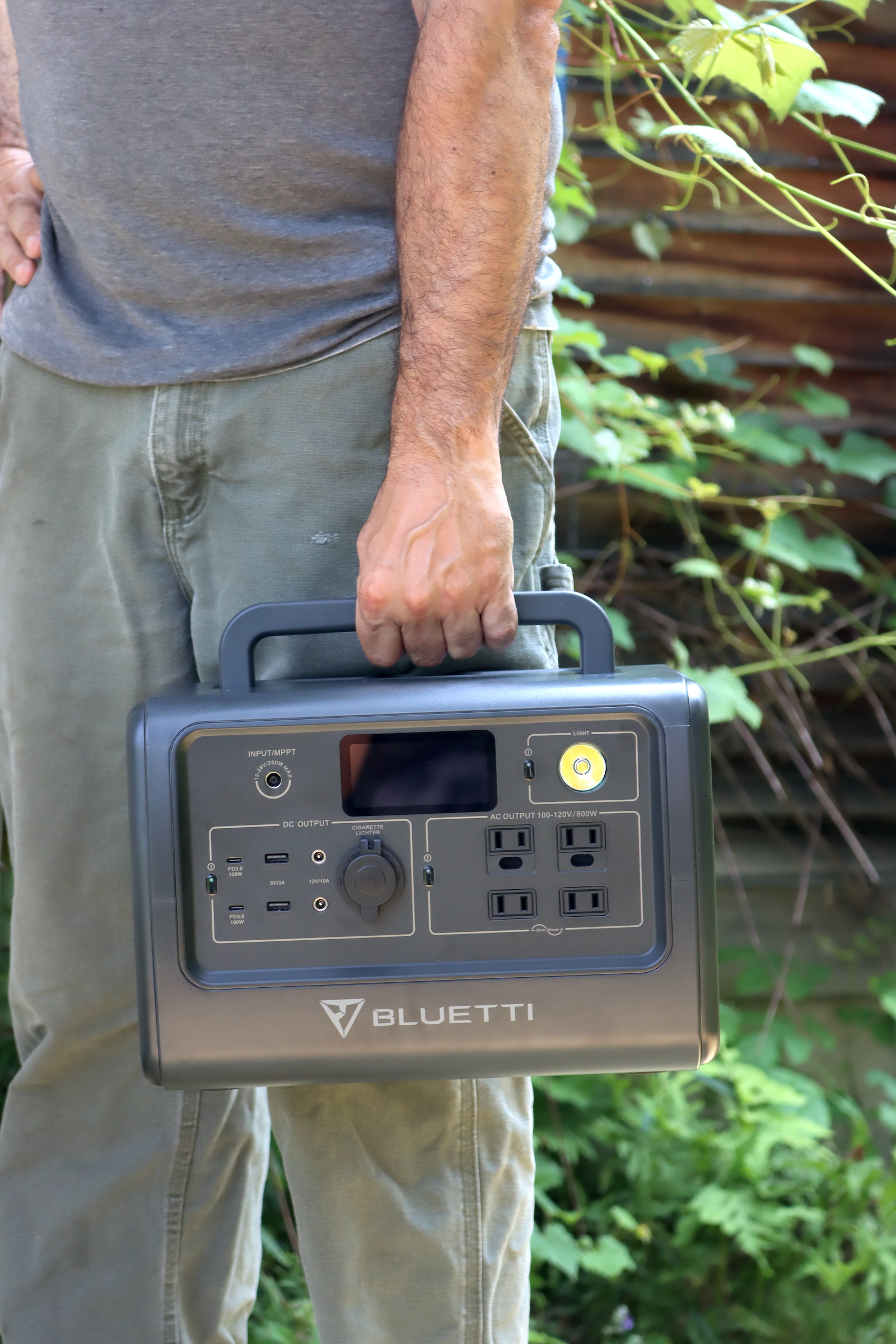
Battery Type
There are two main types of battery technology used in portable power stations today, and they both have costs and benefits. While your capacity needs (size, Watt Hours, etc) will help you determine the exact model you need, the battery chemistry is what helps you determine which manufacturer actually meets your needs. This, in my mind, is the most important differentiator between different portable power station providers.
Lithium Ion (Lion-NMC) are an older battery technology that is relatively lightweight, but it only lasts about 500 charges. The batteries are also a bit less stable, and therefore less safe. They’re used by Jackery and Goal Zero, which are more portable and less expensive…but riskier and less long lived.
This type of battery degrades rapidly if you’re fully discharging it down to zero charge regularly, and they’re really meant to be used down to 60-80% of total capacity and then recharged. NMC batteries die very quickly if you use them below half capacity, and they’re meant to be constantly recharged as they run. That’s fine on a sunny day while camping, where you’re just using the power station to convert sunlight into power in real time, but it’s brutal as a backup battery in a storm.
NMC batteries have a very low self discharge rate, and they’ll hold charge in a back closet for a very long time. After 6 months in storage, our Jackery was still at 97% capacity.
All in all, the main benefit of NMC batteries is that they’re lighter weight and less expensive. They’re perfect for camping or occasionally charging devices, but they’re not the best option for an in home power backup that you’re not physically moving regularly, or you may need to discharge down to 0%.
(If you’re curious, the full name of this battery type is Lithium Nickel Manganese Cobalt Oxide (LiNiMnCoO2)…but it’s usually just shortened to NMC.)
LiFePO4 (Lithium Iron Phosphate or LFP) are a newer battery technology that lasts much longer and is incredibly safe. They will make it 2500 to 3500 charges without degrading, and it can be fully discharged down to 0% without degrading the batteries. This gives LFP batteries a useful lifespan of 20 years or more. They’re a bit more expensive, and about 20 to 30% heavier, but well worth it in terms of quality and safety.
LFP batteries are well worth it for in home backup use, and for anyone hoping to invest in something that will provide power for the better part of a lifetime.
This technology is used by Bluetti and Anker.
Ecoflow has a mixture of both battery chemistries, and in many cases it’s tricky to determine what you’re actually getting. The difference between the two battery chemistries is arguably the most important thing when choosing a portable power station. If you don’t need to move it frequently, then you should always choose the Lithium Iron Phosphate (LFP), they last longer, are safer and can discharge regularly without degrading battery quality. If lightweight is the main consideration, and you’re going to be carrying it to remote locations for camping, then shorter lived (but lighter) NMC batteries may be a better option.
As I’ll discuss shortly, Bluetti is the best option for LFP style batteries, while lightweight portable Jackery batteries are by far the best option if you’re in the market for an NMC battery.
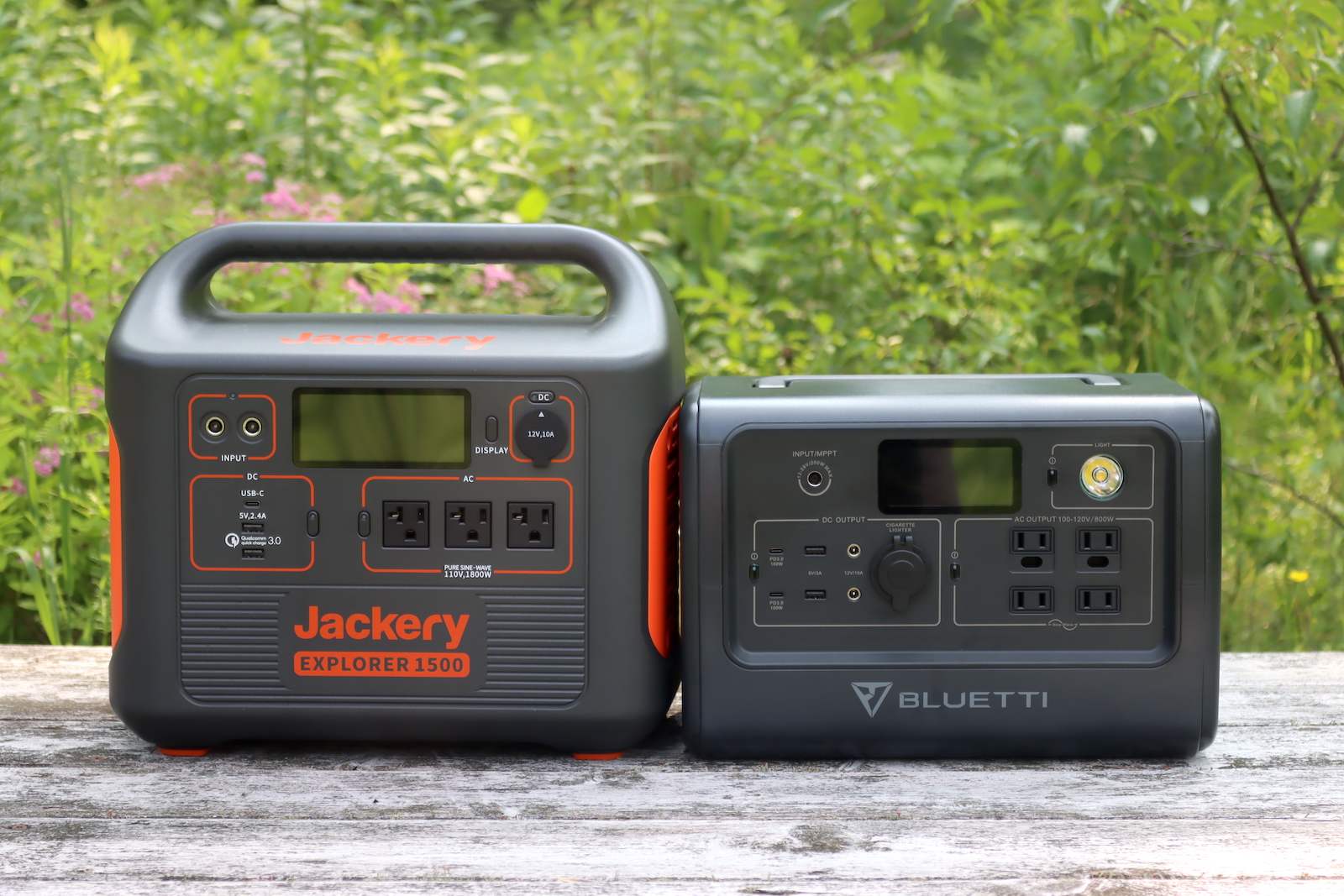
Charging Methods
All of the portable power stations discussed here allow you to charge them from a standard AC wall outlet, DC solar input or a DC car charger (3 methods). That covers the needs of most people, and shouldn’t really be a consideration except in extreme cases.
A few of the models, such as Bluetti’s larger portable power stations, allow you to charge the batteries from more obscure sources, like lead acid batteries (car batteries, deep cycle marine batteries, etc) that you may have lying around in an extreme emergency. That can be nice in some cases, but for the most part, it won’t really come up in day to day use short of a true zombie apocalypse.
Some also allow you to charge from DC solar panels and an AC wall outlet at the same time, which allows the batteries to charge faster. That’s a nice to have, but it’s not often that you’ll have good sunlight in range of an AC outlet for hours at a time unless your house is in the perfect spot.
For the most part, the basic charging methods cover just about every need, and this isn’t really something that should impact most people’s decisions.
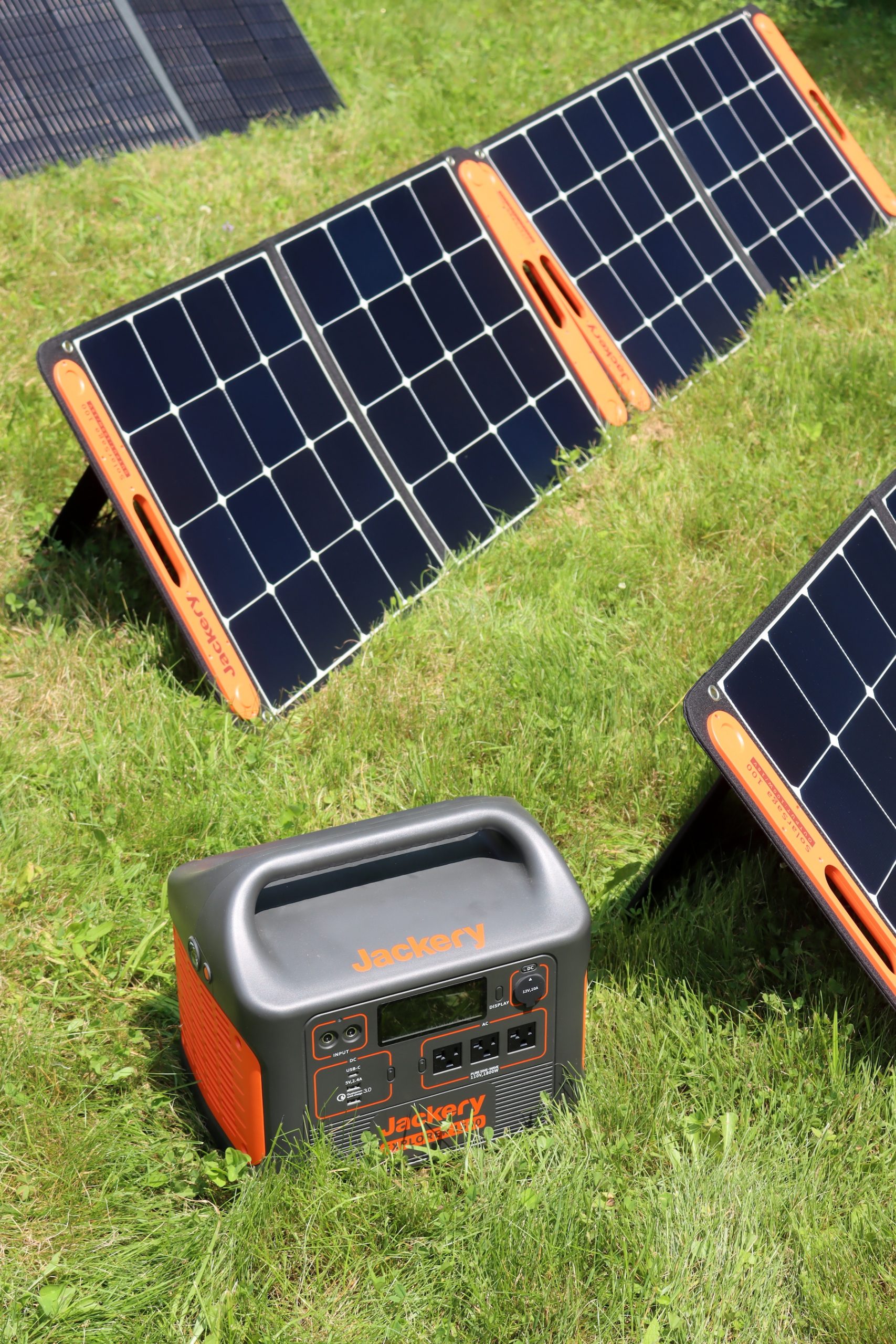
Charging Speed
While charging methods are mostly the same from all the manufacturers, actual charging speed for each battery can vary dramatically. Some models are limited to 100 to 200 Watts total input at a time, meaning they can take 16+ hours to fully charge (regardless of the power source). This is the case with most of the Goal Zero power stations, and they’re the slowest charging on the market (but at pretty much the same price as faster charging models from Jackery).
The fastest charging power stations can go from 0% to 100% in under an hour for small models, and under 2 hours for larger models. Those ultra fast charge models are made by Ecoflow, and based on their marketing, they’ve focused on fast charging above all else.
Most power stations charge fully in 2 to 4 hours, depending on size, and that’s fast enough for most uses. That includes power stations made by Jackery, Bluetti and Anker.
The main thing to note here is that I specifically do not recommend the Goal Zero stations because of their incredibly slow charging speed. If you do, for whatever reason, really want very fast recharge and that’s your main consideration, opt for Ecoflow. In most cases, a 2 to 4 hour charge time is just fine, so it’s not that big of a differentiator.
All portable power stations by definition are also solar generators – they all can connect into solar panels. That’s consistent across manufacturers, though some make solar panels that are lighter and more efficient than others.
My favorite solar portable solar panels at this point are the Jackery 100W panels, because they have a sleek, easy to use design. They unfold nicely, pack up even better and stay in position better than other on the market. They’re also some of the lightest panels available. (Jackery 200W panels are great too, but at twice as big and almost twice as heavy, they’re a bit unwieldy to handle…still better than just about every other portable solar panel on the market though.)
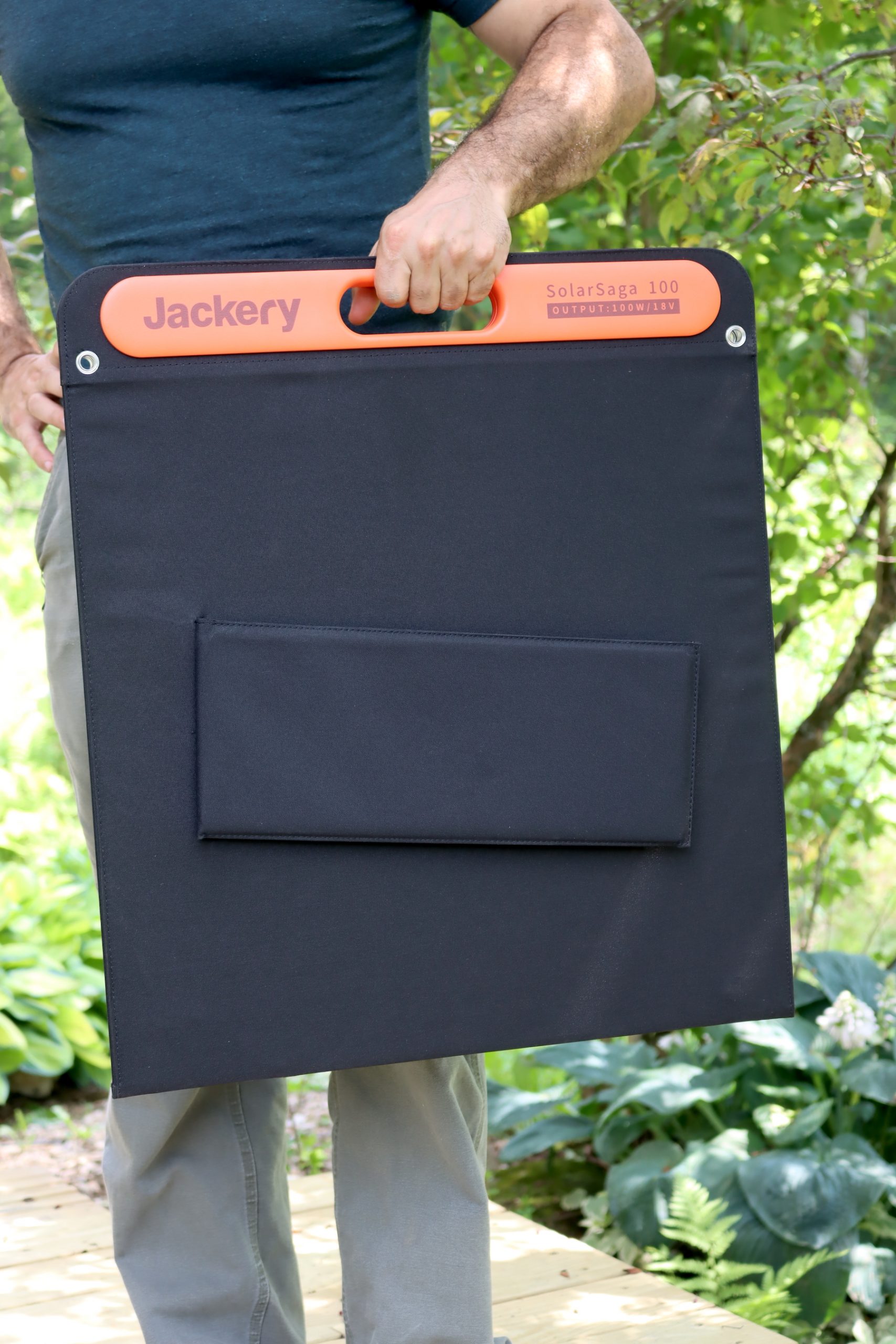
Portable Power Station Reviews
At this point, I’ve covered all of the main decision points when it comes to choosing a portable power station. Now I’m going to take you through all the major brands on the market, including:
In my opinion, the best option for long lasting LFP batteries is Bluetti, and the best option for highly portable, relatively inexpensive NCM batteries in Jackery. I’ll explain why in detail shortly.
Bluetti
A Las Vegas startup that launched in 2019, Bluetti has quickly become one of the biggest manufacturers in the market, largely because they’re offering newer (and much better) Lithium Iron Phosphate battery technology. Older NMC Lithium Batteries are only good for about 500 charges, and they’re prone to fires. The newer Lithium Iron Phosphate batteries last for at least 2500 charges, and they’re incredibly safe.
The downside is that they’re a little bit heavier, so they’re not used in cars (yet). In terms of portable power stations, we’re only taking a few pounds different to get 5x the lifespan and obvious safety benefits. For whole house systems that aren’t moving, these are the obvious choice.
They are slightly more expensive and slightly heavier, but they’re well worth it for most use cases.
Besides using the better LiFePO4 battery technology, Bluetti also added in 7 different methods for charging these batteries, which covers just about everything you can imagine in an emergency. Most portable power stations can be charged by an AC wall outlet plugin or with a DC car plugin, but Bluetti offers 5 other options in many of their larger power stations to ensure that you always have a way to charge your battery no matter what’s going on in the world.
That fact, along with their dependable, long lasting, safe battery technology makes them my top choice for emergency backup power at home.
In terms of output types, they offer all of the main plugs, including AC outlets, DC carports and USB-A and USB-C. They’re the only manufacturer that has a wireless charging pad built into the top of the unit, so that’s handy if you have a phone that can take wireless charging.
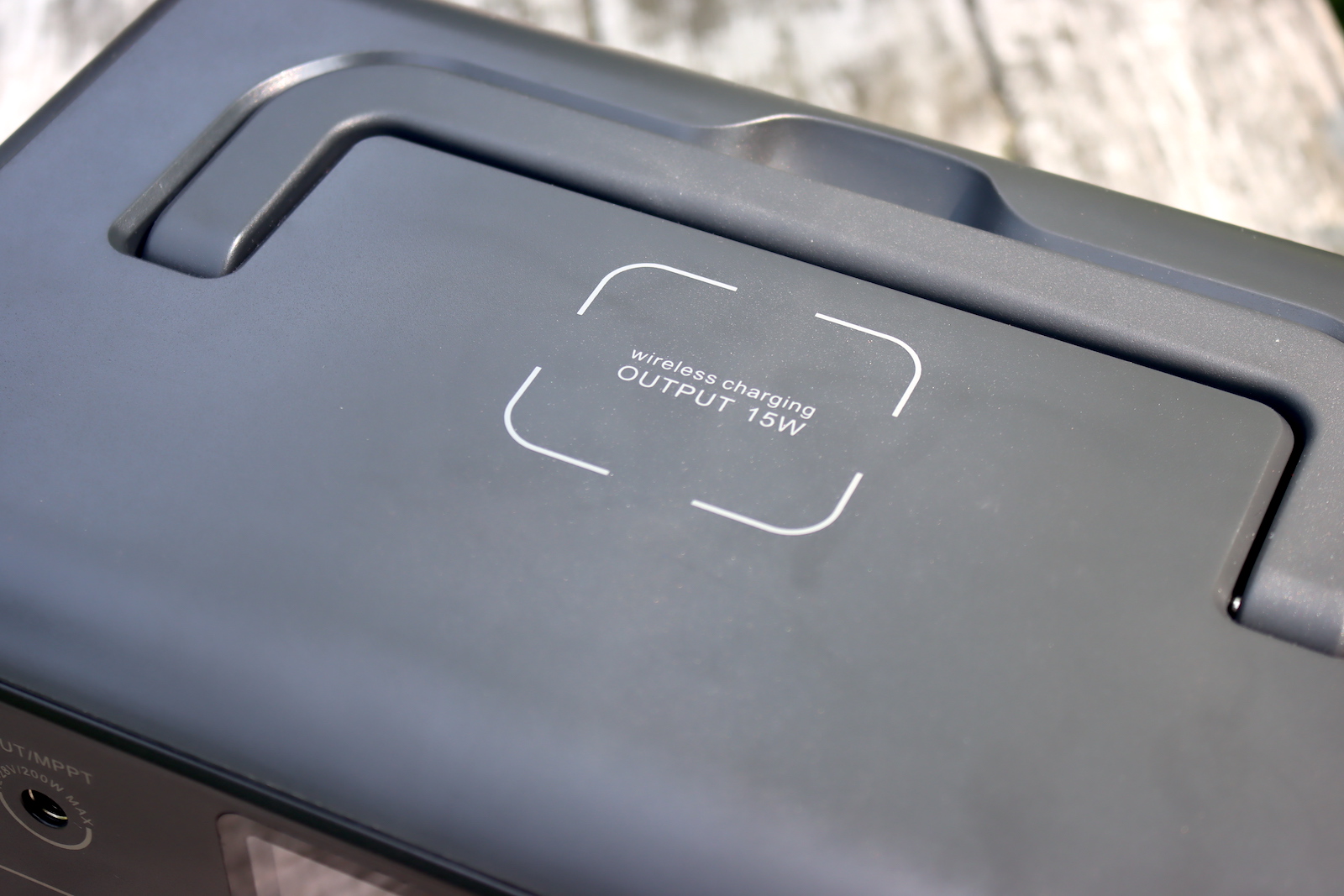
Bluetti in particular offers a lot of different size options, from a small 10 pound 600 watt portable battery system all the way up to a whole house backup system that’d power a modern home for a week without a blip.
At this point, I’m only talking about portable power stations that are designed to be carried or moved by 1 or 2 people. The type you’d keep in a closet in your apartment for charging devices or running appliances in an emergency, or carry with you when car camping.
Bleutti also offers whole whole battery backup options with outputs up to 9000 W and 19,840 WH. (For reference, our home inverter is rated for 3000 W output and we can run all our appliances, well pump, AC, washer, dishwasher, oven, tools, etc. at the same time without any issues. You could run 3 of our house on that system!)
- Battery Type: LiFePO4 (Lithium Iron Phosphate)
- Size Options: 268 wH to 8192 wH
- AC Output: 600W to 2200W
- Recharge Time: 1.2 to 6 hours, depending on model size
- Recharge Options: AC/Solar/Car/Generator/Lead Battery/Dual AC/AC+Solar (7 Methods)
- Outlet Types: AC outlet, DC Carport, USB-A & USB-C Charging Ports, Wireless Charging Pad and TT-30 (larger models)
- Lifespan: 2500 charges, 20+ years continuous usage
- Solar Panels: 120W, 200W, 350W, 420W
- Warranty: 2 years
Bluetti Portable Power Station Options Include:
- EB3A – 600W – 268 WH – 10.1 lbs
- EB55 – 700W – 537 WH – 16.5 lbs
- EB70S – 800W – 716 WH – 21.4 lbs
- AC180 – 1800W – 1152 WH – 35.3 lbs
- AC200P – 2000W – 2000 WH – 60.6 lbs
- AC200MAX (with TT-30 plug)- 2200W – 2048 WH – 61.9 lbs
Most of their offerings are stand alone power stations, but the AC200Max is an expandable power station that’s 2200 W with a capacity that ranges between 2,048Wh to 8,192Wh with the addition of B230 or B300 Batteries. This is one of their smaller whole house options, and it is still technically “portable,” especially if you’re traveling by car or RV. It comes with a TT-30 RV plug, and it’s the best portable power station for RVs and whole home backup.
The B300 adds 3072 WH per battery and the B230 adds 2048 WH per battery, and you can add between 2 and 4 batteries depending on compatibility.
This review is limited to portable power stations, so I won’t go through all their larger whole house options, but here’s where you can find information about their whole house backup power options. In general, Bluetti is my pick for whole home power backup, and you just need to choose the system size based on your needs.
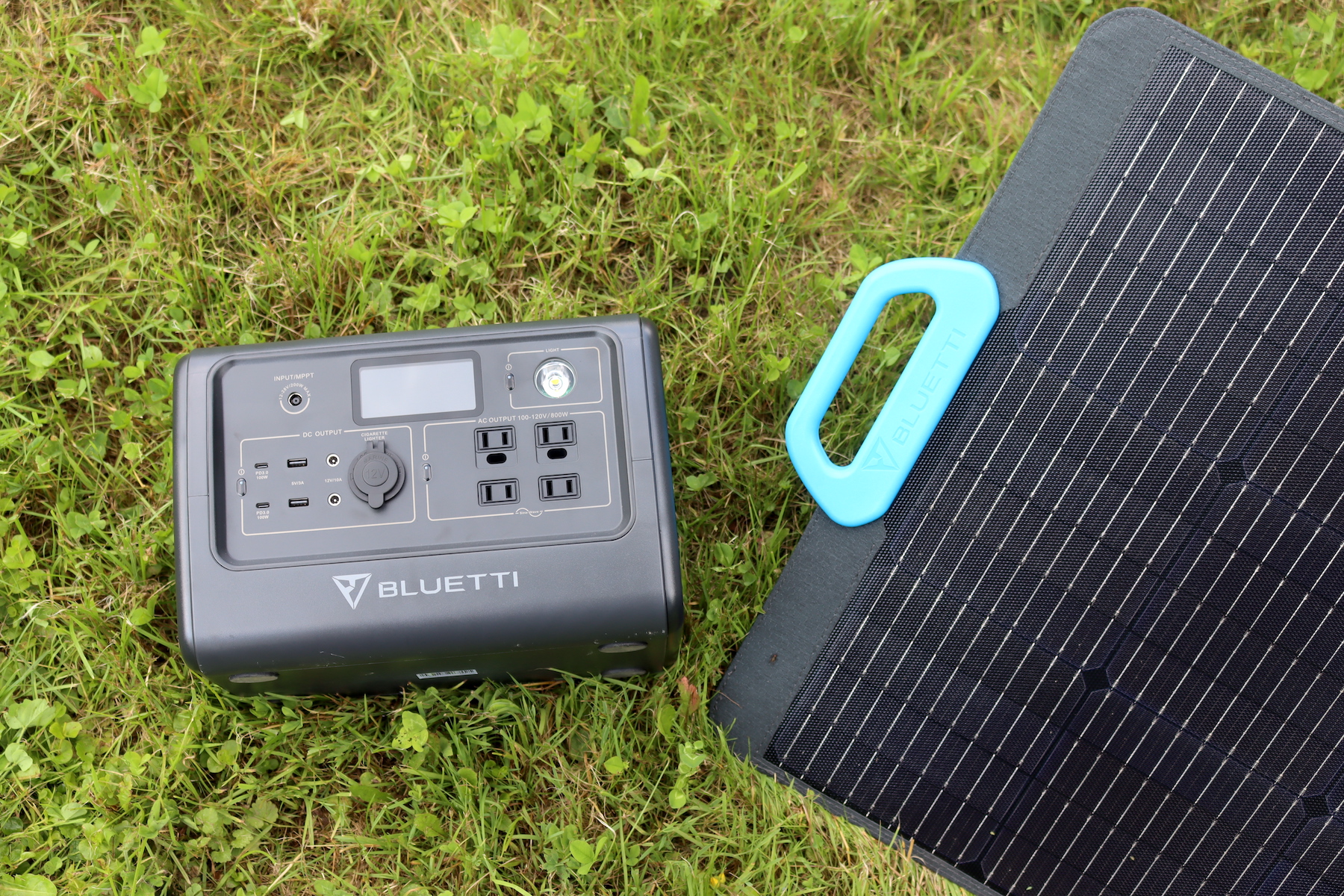
Jackery
A California based company founded in 2012, Jackery was one of the first portable powers stations designed for camping. Each of their portable power stations has a built in handle for easy carrying, and they introduced lightweight solar panels that pair perfectly for easy charging on the road.
They’re one of the best selling portable power stations on the market, with more than 2 million units currently in use worldwide. People really seem to love the portability and ease of use that comes with a Jackery.
Jackery boasts that their portable power stations weigh 30% less than the competition, and really markets themselves toward campers and RV enthusiasts. A batter can fully charge in under 2 hours, and will operate in both cold and heat (from 14 F to 104F, or -10 to 40C).
They’re lightweight and relatively inexpensive because they use the older NMC battery technology, which has it’s downsides. It’s a bit less safe than the newer Lithium Iron Phosphate batteries, and the batteries wear out much faster. This the best portable power station for camping, where you really need the portability, but not the best choice for home use.
They’re rated to provide standby power continuously for 2 to 4 years (daily usage & recharge), or weekly usage for camping and other trips for up to 8 to 10 years.
They offer a 3 year warranty, with an additional 2 year extended warranty if you register your product. That is one of the best warranties on the market, and it shows they really stand behind their products.
- Battery Type: Lithium Ion (Lion-NMC)
- Size Options: 240 WH to 3024 WH
- AC Output: 160W to 3000W
- Recharge Time: 1.8 to 2.4 Hours for pro series, 6+ hours for regular models
- Recharge Options: AC Wall Outlet, Solar Panels, DC Car Charger (3 Ways)
- Outlet Types: AC outlet, DC Carport and USB-A Charging Ports
- Lifespan: 500 Charges, 4 to 10 years, depending on Usage
- Solar Panels: 80W, 100W, 200W
- Warranty: 3 years, with option for 5 years
Jackery Power Station Options Include:
- Explorer 240 – 200W – 240 WH – 6.5 lbs
- Explorer 300 – 300W – 293 WH – 7.1 lbs
- Explorer 500 – 500W – 518 WH – 13.3 lbs
- Explorer 1000 – 1000W – 1002 WH – 22 lbs
- Explorer 1500 – 1800W – 1534 WH – 35.2 lbs
- Explorer 1500 Pro – 1800W – 1512 WH – 37.5 lbs
- Explorer 2000 Pro – 2200W – 2160 WH – 43 lbs
- Explorer 3000 Pro – 3000W – 3024 WH – 64 lbs
Jackery also offers high whole house battery banks and expansion batteries, which is outside the scope of this review. In any case, the real benefit of the lightweight NMC battery chemistry is portability. If you’re looking for a whole house solution, you really should consider LiFePO4 (Lithium Iron Phosphate) batteries, such as those made by Bluetti.
If you need solar charging, Jackery has portable solar panels in 80W, 100W and 200W. Their main solar panel page has a “how many solar panels do I need” calculator that will help you choose the right number of panels to most efficiently charge the portable power station you’ve chosen.
Pro models have more inputs, so they can accommodate more panels and charge faster. Anything under a Jackery 500 only needs a single panel of any size to get the job done.
We have a Jackery 1500, along with four 100 Watt Solar Panels. When we bought ours, the faster charging Jackery 1500 pro was not available yet, let alone the 2000 and 3000 models. If I had to choose again I’d get the Explorer 2000 Pro, as it’s about the same price as the 1500 but has much more capacity and faster charging, and it’s only a few pounds heavier.
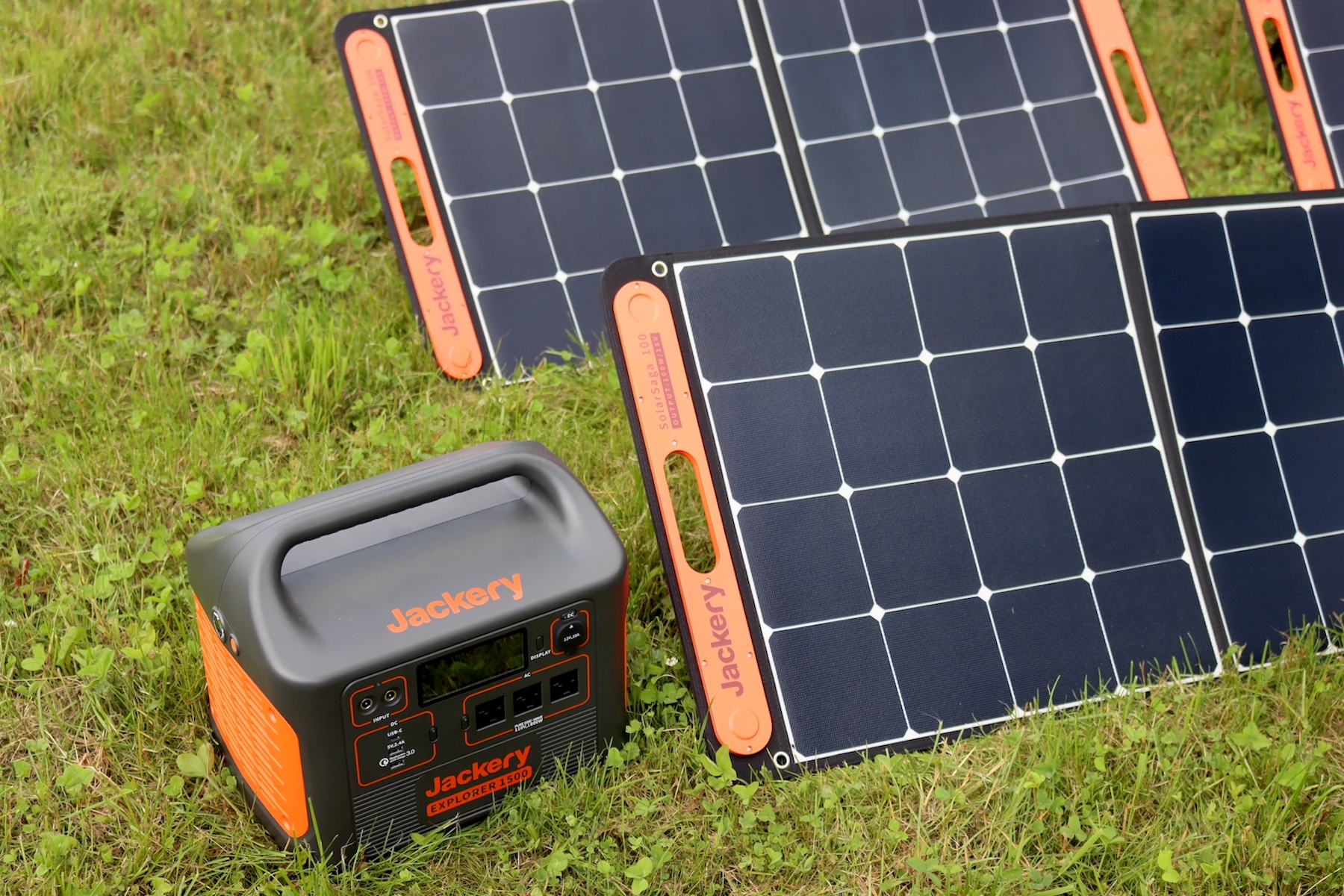
Goal Zero
A Utah based company founded in 2009, Goal Zero offers portable power stations in a wide variety of sizes. They’re made with the older, NMC style batteries (similar to Jackery) that are less stable and have a shorter life span than the new Lithium Iron Phosphate Power stations made by Bluetti and Anker.
All in all, the NMC batteries offered by Goal Zero are similar to Jackery, but they take much longer to charge from a standard AC wall outlet.
The Yeti 1000X takes a full 10 hours to charge and the Yeti 1500X takes 14 hours, while the comparable Jackery 1500 takes just 2.5 hours. All for a similar price and weight.
Goal Zero power stations do have the option of a USB-C outlet (in addition to the USB-A), but that’s the only real advantage that I can see. If you have a USB-C device, a converter cable is about $10 to go from USB-A, so a Jackery is a much better option if you’re looking for a portable NMC power station.
The final consideration is size. They offer some of the largest NMC batteries on the market, going all the way up to a 6071 WH battery capacity with their Yeti 6000x. Keep in mind that at that size, it’s no longer considered “light weight” as it’s 106 lbs. Once you get to larger capacity batteries, it makes sense to use longer lasting, more dependable LFP batteries.
Solar panels made by Goal Zero are all extremely heavy, especially compared to the lightweight options offered by competitors with the same ratings. A 100W Goal Zero panel weighs 26 lbs, while a comparable 100W panel from Jackery weighs just 10 lbs (and costs exactly the same).
In my opinion, Goal Zero is one of the worst options on the market, at least in terms of major brand names.
- Battery Type: Lithium Ion (Lion-NMC)
- Size Options: 187 WH to 6071 WH
- AC Output: 120W to 2000 W
- Recharge Time: 4 to 18 Hours, depending on the model
- Recharge Options: AC Wall Outlet, Solar Panels, DC Car Charger (3 Ways)
- Outlet Types: AC outlet, DC Carport, USB-A and USB-C
- Lifespan: 500 Charges, 4 to 10 years, depending on Usage
- Solar Panels: 5W, 10W, 20W, 50W, 100W,
- Warranty: 2 years
Options Include:
- Yeti 200X – 120W – 187 WH – 5 lbs
- Yeti 500X – 300W -505 WH – 12.9 lbs
- Yeti 1000X – 1500W -983 WH – 31.7 lbs
- Yeti 1500X – 2000W – 1516 WH – 45.6 lbs
- Yeti 3000X – 2000W – 3032 WH – 69.8 lbs
- Yeti 6000X – 2000W – 6071 WH – 106 lbs
Anker
A tech company founded in 2011, Anker has produced small battery packs for years, along with a wide variety of excellent USB hubs (we use Anker hubs nearly exclusively), but they only recently started manufacturing portable power stations.
The larger, more advanced models (757 and 767) have faster recharging technology, and can recharge in as little as 1.5 hours, while the smaller models are a bit slower and take around 6 hours from a standard wall outlet.
Their models use advanced Lithium Iron Phosphate batteries, and in many ways they’re very similar to Bluetti’s power stations. The main difference is that Anker’s are much more expensive, and much heavier.
One of their models, the Powerhouse 767 has a built in TT-30 plug that allows it to connect directly as the power source for an RV, similar to Bluetti’s large models.
If you’re looking for something with the same technical specs, but a bit lighter and less expensive, go with Bluetti.
- Battery Type: LiFePO4 (Lithium Iron Phosphate)
- Size Options: 512 WH to 2048 WH, plus add on batteries
- AC Output: 500 W to 2400 W
- Recharge Time: 1.5 hours to 6 hours, depending on the model
- Recharge Options: AC Wall Outlet, Solar Panels, DC Car Charger (3 Ways)
- Outlet Types: AC outlet, DC Carport, USB-A, USB-C, and TT-30 (767 only)
- Lifespan: 3000 charges, 20+ years continuous usage
- Solar Panels:100W and 200W
- Warranty: 5 Years
Options include:
- Powerhouse 535 – 500W – 512 WH – 16.75 lbs
- Powerhouse 545 – 500 W – 778 WH – 18.3 lbs
- Powerhouse 555 – 1000 W – 1024 WH – 29.8 lbs
- Powerhouse 757 (SOLIX 1200) – 1500 W – 1229 WH – 43.9 lbs
- Powerhouse 767 (Solix F2000) with TT-30 RV Port – 2400 W – 2048 WH – 67.2 lbs
Ecoflow
Perhaps best known for their whole house backup options, Ecoflow also offers portable power stations and solar panels. They boast the fastest charging in the industry, and most of their portable power stations charge in 1 to 2 hours, depending on the model. (That’s a bit faster than Jackery and Bluetti, and it makes the 10 to 16 hour charge times of Goal Zero just plain embarrassing.)
My main complaint with Ecoflow is that it’s incredibly difficult to sort through all their options. The naming conventions from the other companies are very simple, but Ecoflow didn’t get that memo.
They offer at least 17 different portable power station models…but all of them have very similar (and confusing) names. Some have older and less stable NMC battery technology (similar to Jackery and Goal Zero) and others have the modern long lasting Iron Phosphate battery chemistry (like Bluetti and Anker), but they make it very difficult to actually see what you’re buying.
The battery chemistry info is arguably the most important factor, but it’s buried deep within the specs page and I imagine many of their customers think they’re getting one thing but end up with another.
(I’ve actually even found references that claim that some of their batteries are made with the obsolete – and highly toxic – Nickel Cadmium (Ni-Cad) chemistry, but at least as far as I can tell those have been discontinued.)
With so many different models, and multiple battery chemistries, it’s incredibly hard to find the right charging cables and accessories (or combine multiple batteries in one system).
Generally, you can’t combine two types of battery chemistries into a single system, so if you’re looking for a whole house solution with multiple units it can be extremely complicated to figure out exactly what you need. They also have many different discontinued units, and overall it seems like they can’t seem to make up their minds about what they’re doing.
It also looks like they come out with different models every year, and getting accessories and support for retired models may be difficult after just a few years. Add in the fact that they only offer a 12 to 24 month warranty, the shortest in the industry, and it really seems like they’re not planning on supporting any particular model in the long term.
Beyond power stations, they offer 7 different types of solar panels, multiple different whole house and portable wiring options.
While they have by far the most choices…but it’s paralyzing trying to sort through them all. As someone who knows quite a bit about batteries and off grid technology, it’s still disturbingly complicated to sort through.
- Battery Type: LiFePO4 and NCM
- Size Options: 300W to 3600W for Portable, plus whole house options
- AC Output: 256 WH to 3600 WH for portable, plus whole house options
- Recharge Time: 1 to 2 hours, depending on the model
- Recharge Options: AC Wall Outlet, Solar Panels, DC Car Charger (3 Ways)
- Outlet Types: AC, USB-A, USB-C, DC Car Port and DC5521 Output
- Lifespan: Depends on Battery Chemistry, 2 to 10 years
- Solar Panels: Portable 60W, 110W, 160W, 220W Bi-facial, 400W. Or Mountable 100W & 400W.
- Warranty: 12 to 24 Months
They break their offerings down into different groups, and portable power stations under 1000W are in the “River 2 Series.” Some (but not all) of these are the safer, longer lasting Lithium Iron Phosphate batteries:
- Ecoflow River 2 (LFP)- 300W – 256 WH – 7.7 lbs
- Ecoflow River 2 Max (LFP)- 500W – 512 WH – 13.4 lbs
- Ecoflow River 2 Pro (LFP)- 800W – 768 WH – 17.2 lbs
Of course, to confuse things, they also have a “River series” power stations with NMC batteries:
- River Mini (NCM) – 300 W – 210 WH – 6.3 lbs
- River (NCM) – 600W – 288 WH – 11.9 lbs
- River Plus (NCM) – 600W – 360 WH – 11.9 lbs
- Ecoflow River Pro (NCM)- 600W – 720 WH – 16.8 lbs
- River Max Black (NCM) – 600W – 576 WH – 17.7 lbs
- River Max Plus (NCM)- 600W – 720 WH – 17.7 lbs
The larger Ecoflow power stations are in the Delta Series, and some (but not all) of these are run on Lithium Iron Phosphate battery chemistry. These are Lithium Iron Phosphate options in the Delta series:
- Ecoflow Delta 2 (LFP)- 1800W – 1000 WH – 26.4 lbs
- Ecoflow Delta 2 Max (LFP)- 2000W – 2000 WH – 50.7 lbs
- Ecoflow Delta Pro (LFP)- 3600W – 3600 WH – 99.2 lbs
To make things confusing, they also have less stable, shorter lifespan (but lighter) NMC batteries in the Delta series, namely the several Ecoflow Delta and Delta Max options. I know, the names are very similar, but with the NMC battery chemistry you’re getting something completely different here.
- Delta Mini (NCM)- 1400 W – 882 WH – 23.6 lbs
- Ecoflow Delta 1000 (NCM)- 1600W – 1008 WH – 30.9 lbs
- Ecoflow Delta 1300 (NCM)- 1800W – 1260 WH – 30.9 lbs
- Ecoflow Delta Max 1600 (NCM)- 1800W – 1612 WH – 48.5 lbs
- Ecoflow Delta Max 2000 (NCM)- 1800W – 2016 WH – 48.5 lbs
Beyond all the confusing names in their portable power stations, they also offer more solar panel options than any other portable power station manufacturer, including both portable panels in 60W, 110W, 160W, 220W Bi-facial, 400W. They also have mountable 100W & 400W panels.
Portable Power Station FAQ
At this point, I hope I’ve given you enough information to decide on a portable power bank for your needs. In a nutshell, I’d suggest choosing something from Jackery if you need extra portability for camping, but in all other cases, Bluetti is a better option since the battery technology lasts much longer (3000 recharges, instead of 500) and is significantly safer.
These are some of the most common questions asked about portable power banks and solar generators. If you don’t find the answers you need, leave me a note in the comments and I’ll add your question (and my answer) to the list.
How is a Portable Power Station Different than a Generator?
Old style portable generators generally run on gas or diesel, and they don’t have batteries attached. They can power things directly so long as they’re running, but they won’t work unless the engine is on. They can only be stored and run outside, and they’re noisy and produce a lot of emissions. They have to be professionally installed for whole house use, and there’s a risk of carbon monoxide poisoning if improperly setup.
Portable power stations, on the other hand, are batteries that can run indoors 24/7 without emissions or notable noise. They’re recharged via solar panels, but they work just fine from battery power on cloudy days too.
You can, of course, recharge your power station using a gas-powered generator. This can be helpful in an extended outage, where you run heavy appliances for an hour or two directly off the generator while also charging the power station, then using the power station for smaller power needs throughout the day (or overnight).
Is a Power Station Better than a Gas Generator?
It really depends on your situation. Having battery backup power will allow you to run things 24/7, and you don’t have to have a noisy generator going to keep small things going overnight (like a CPAP machine). Power banks are more portable and work better for camping, and they’re perfect for short-term outages (or outages in areas with a lot of suns to recharge the batteries each day).
The main benefit of gas generators is they can produce power for very high watt tools, like welders, so they’re used in back country construction applications where power banks won’t quite put out enough juice. The also have the benefit of working well in cloudy areas for extended outages, where you don’t get much charge from solar panels.
Is a Portable Power Station the Same as a Power Bank?
This is where terminology gets tricky. Some people use the terms interchangeably, but generally, power stations are larger batteries capable of powering appliances. Power banks, on the other hand, are very small batteries that are used to charge phones a few times.
Power stations have regular AC house plug outlets, while power banks generally have just a USB plug for your phone or laptop charger. They’re really just an extra battery for your devices, while a power station can be used for just about anything.
Is a Power Station the Same as a Solar Generator?
Yes. Portable power stations are the same as a solar generator. Generally, when you say portable power station, you’re referring to the batteries and inverter that are housed in a portable box. When you add on the solar panels as well, the whole thing is called a solar generator. A solar generator is just a portable power station with solar panels attached.
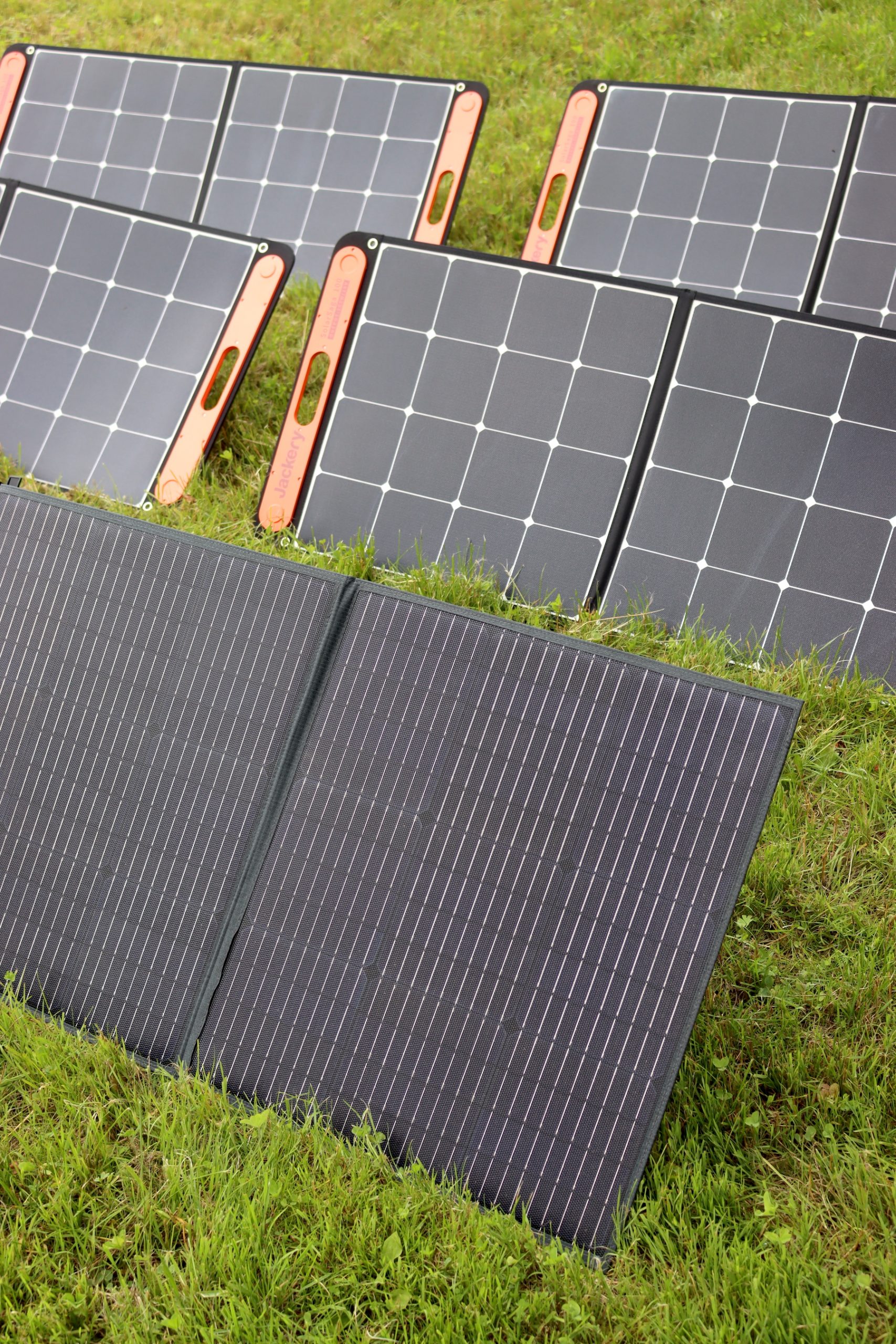
What Can a Portable Power Station Run?
Depending on the size of the portable power station, they can run 99% of common household appliances. The main exceptions are some extra large induction cook tops, really deep wells with overpowered pumps, large heat pumps, and large electric dryers. (Most average sized versions of these can be powered on a good sized portable power station, we’re just talking about the really jumbo versions.)
Portable power stations range between 200 Watts and 3000 Watts output, so you’ll just need to check the particular appliance you have on hand and make sure that you choose a power station rated to handle the maximum wattage. A list of the watt requirements for common household appliances can be found at the beginning of this article.
Can a Portable Power Station Run a Refrigerator?
Yes. Most portable power stations are rated to run refrigerators, but you’ll need to check the wattage of your particular refrigerator. A typical household refrigerator is around 350 to 800 watts, so you’d just need to choose a power station that can handle that kind of output. Small dorm sized refrigerators need less power, and some of those run on as little as 100 watts.
How long you can run a refrigerator depends on the total watt hours of the battery, and if it’s recharging while it’s running. An average household refrigerator requires 4,000 watt hours of electricity to run for 24 hours, and mini fridges or dorm fridges can often run on as little as 600 watt hours per 24 hour period.
How Long Does a Portable Power Station Last?
The lifespan of a portable power station depends on the battery chemistry and how often you use and recharge the battery.
Longer lasting LFP batteries used by Bluetti and Anker, as well as some of the newer Ecoflow power stations are rated for 3000 recharges. That’s 8 to 10 years of life if they’re used every day, or 30+ years if they’re used a couple of times a week. If you’re using them very infrequently for camping or emergencies, they’ll last even longer. They’re basically a lifetime investment, if cared for properly.
Shorter lasting NCM batteries used by Jackery and Goal Zero, as well as some of the older Ecoflow power stations are only rated for 500 recharges, and they degrade rapidly if they’re frequently discharged down to 0%. They’re rated for 2 to 4 years of frequent use, or up to 8 to 10 years of occasional emergency use if kept well charged. The main benefit of this type of battery chemistry is that it’s 30% lighter than LFP batteries, so it’s a bit more portable.
Generally, longer lasting LFP batteries are a much better long term investment if you’re not carrying the battery around with you constantly, but portable NCM batteries often work out better for car camping.
What is the Best Way to Charge My Portable Power Station?
It depends on the type of power station, and how the manufacturer designed it. Most power stations will charge fastest through a standard AC wall outlet, and some manufacturers allow you to charge the power station from 2 AC outlets simultaneously.
In many cases, the fastest charge actually comes from simultaneous AC charging and DC solar charging, if your power station is setup for that sort of thing. Many don’t allow for two simultaneous inputs, or cap the total inbound watts due to hardware limitations.
Ecoflow power stations are the fastest charging, and they charge best with a standard AC outlet.
Jackery Power stations charge from an AC outlet in about 2 to 3 hours, but take 35+ hours through a cars DC port. Solar charging them takes 6 to 12 hours, depending on the model. You cannot dual charge Jackery power stations, and you need to choose a single input type.
Some of the larger Bluetti power stations like the AC200Max allow for dual solar and AC outlet charging, and that is the fastest way to charge those. (Smaller models only have one input.)
For Goal Zero power stations, AC is your best bet, but all methods are extremely slow because they used cheap charging technology. It’s going to take 16+ hours to charge many of their power stations, and longer if you use solar. I don’t really recommend them at all, for this charging issue, as well as other flaws.
How Important is Power Station Battery Chemistry?
Arguably, the battery chemistry of your portable power station is the single most important factor. Once you choose the battery chemistry, the only other thing you need to decide on is size based on your power needs.
I talk extensively about the pros and cons of each type of battery chemistry, but in general, longer lasting LFP batteries used by Bluetti and Anker, as well as some of the newer Ecoflow power stations are the best option for most applications. You should only choose the NCM battery type (used by Jackery and Goal Zero) if you need very light weight batteries for camping or other uses where you’ll be physically carrying them with you frequently. Even then, many of the smaller LFP batteries are only slightly heavier and they are very portable too.
Preparedness Resources
Looking for more preparedness resources?
- Best (and Worst) Emergency Food Suppliers
- How to Prepare for WWIII
- Survival Gardening: Our Real Life Dry Run
- Best MRE Meals (Meals Ready to Eat)
- Emergency Water Filtration Options
Off Grid Living
Looking for more off grid living inspiration?
- Gravity Fed Household Water for Off Grid Living
- DIY Root Cellar Plans (Low Cost, Simple Design)
- How to Use a Wood Cook Stove
- Pedal Powered Washing Machine for Off Grid Laundry
- Maintaining Off Grid Systems in Winter
- Off Grid Appliances
- How to Find Off Grid Homes for Sale
- 7 Tips for a More Dependable Off Grid System
- 6 Things I Wish I’d Known Before Moving Off Grid
- 10 Luxuries We Have Off Grid (That Most Suburban Homes Don’t)
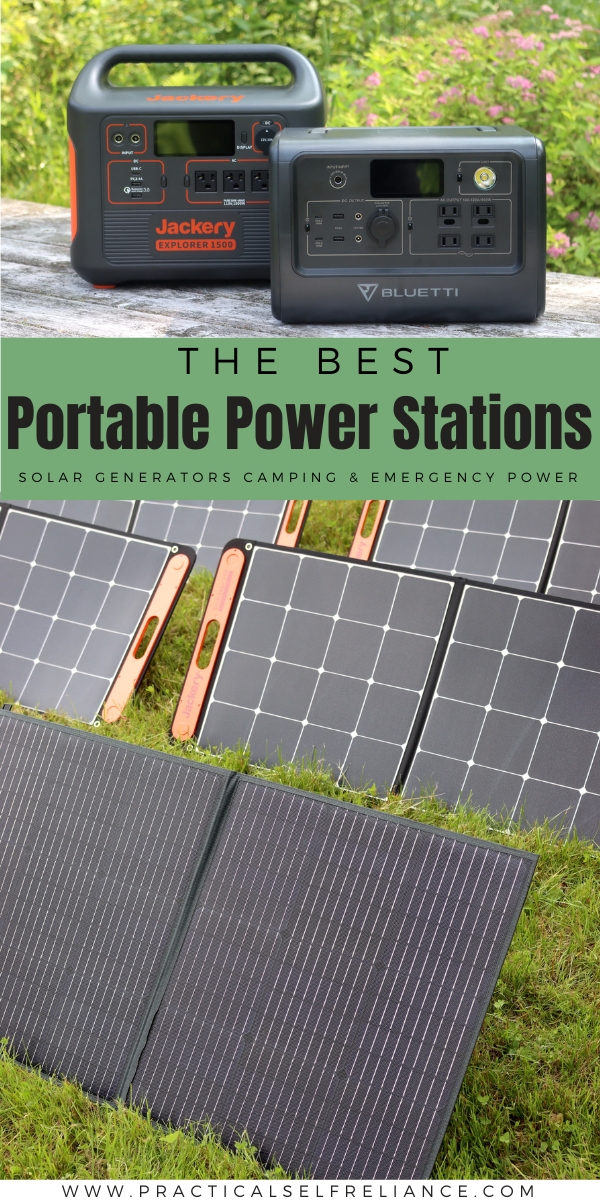
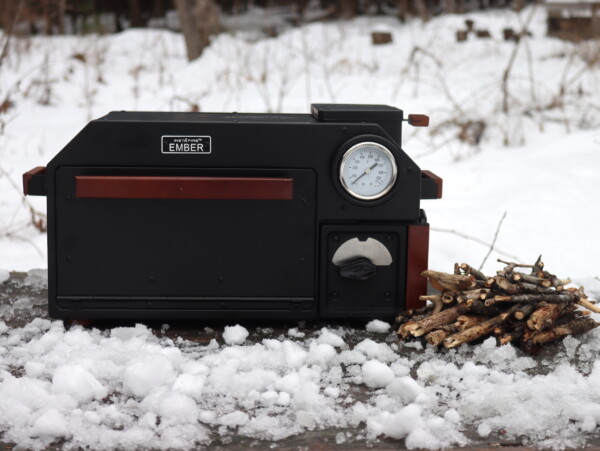
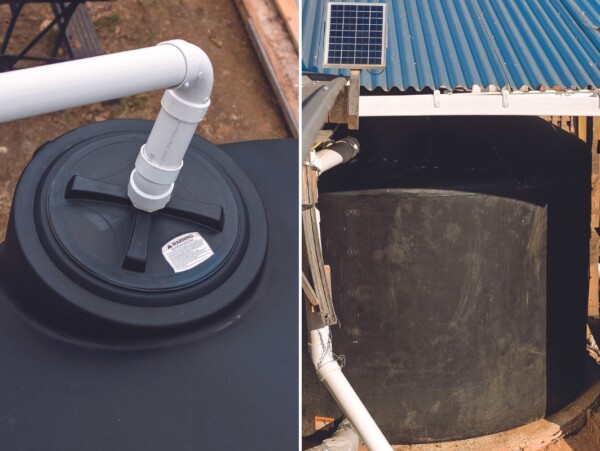
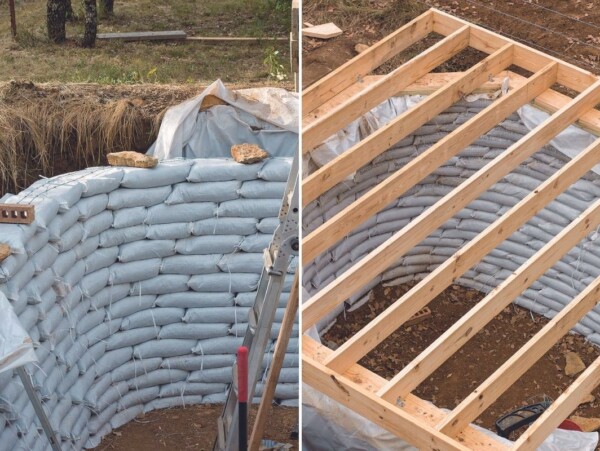
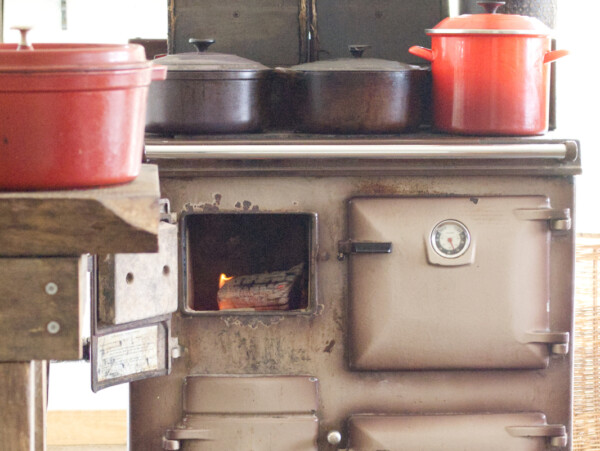
This is one of the best articles on this subject that I’ve read in years! Thanks for compiling all of the data and then providing experienced judgement when looking at all of the options. A couple of years ago we opted for a Bluetti “stack”, 3 batteries providing over 6,000 watts. We live in an area with lots of “blue sky power outages”. This set up keeps our primary refrigerator cool, keeps a fan going and powers lights and runs the coffee pot when needed. It’s saved us hundreds of dollars in spoiled food expenses (ask me how I know 😉 ). Thanks again!
Hi Ashley,
Dumb question here.
Were looking at short term solutions to a problem whose only real solution is move to a lower altitude VT town or a different part of the state.
We’re getting more and more power outages from heavy wind and rain storms. Our basement floods in these situations and we have to run a portable pump for hours to keep the water from getting high enough to damage our backup oil furnace. So far, we haven’t had an outage plus heavy rain, but you never know and not being prepared .could cause a disaster. (can’t afford a new oil furnace)
(We heat with wood, cook with an old gas stove and have a water store, so we are not worried about powering other things if the outage doesn’t go on more than four days or so. We don’t have solar.: too many trees.)
I’m thinking of buying a Bluetti and charging it from the house AC if worrying weather is predicted. Or I could just build a knee-high cinder block wall around the furnace and heat pump.
If you imagined yourself as a stupid person in this a situation like this, what might you do?
Thanks!
I think the Bluetti sounds like a good option and you could potentially use it in other situations as well or even a gas powered generator.
computer repair wife here. A laptop would only run on direct electric or your backup battery IF the laptop’s own battery has failed or is failing. So you’re not really running a laptop on portable.
You’d need the juice to give it its full charge which can take from 2 to 6 hours or more depending on make and model (a lot like a car, things depend on things).
Hope this helps. I saw one that was in a Patriot gear branded email but I can’t remember the company’s full name so I can ask you to review it. I’ll reply to my comment here if I can find it later.
Thanks for this comprehensive guide! This post is a lifesaver for anyone planning extended outdoor trips.
You’re welcome. We’re so glad you enjoyed it.
WOW! I am and have been so overwhelmed by the solar and battery information. You have taught me a lot in a format that I can understand. I will keep this info handy and really appreciate the wattage information of the appliances. What a nice guideline. I also appreciate the hours and the weight information on these systems. You are amazing to have compiled all this information. Thank you so much!
You’re very welcome. We’re so glad that you enjoyed it.
Lots of great information. I want to have a small solar system for a small greenhouse to power a small heater and grow lights in the spring and a small fan in the summer. What would you recommend?
Grow lights and heaters are usually really power intensive, especially when there’s not much sun out in winter time. I don’t have any specific recommendations, as it’s really going to depend on your weather and a bunch of other factors, but my best guess is you’d have trouble powering any kind of grow light or heat on just solar as when you need grow light’s and heat, there’s not much sun by definition.
Thank you for compiling all this helpful info.
We are looking to tip toe our way off grid incrementally so this is an excellent resource as we strategize becoming incrementally less dependent on the grid.
The only thing that has been holding me back from diving into getting some larger lithium based units for emergencies and eventually everyday use is what I have learned about the Cobalt mining operations in the Congo as well as the open pit Lithium mines planned for northern Ontario and Quebec (in what is now pristine boreal forest).
Have you heard of a book called Cobalt Red?
Also, have you looked into the ecological impacts of lithium mining/processing?
I can share a link to an article I wrote about the mines proposed for northern Ontario specifically if you are interested in learning more.
Have you guys looked into that new tech for Hydrogen Solar units?
Thanks again for all the time and research that went into the article above.
We’re so glad you enjoyed the article. Thank you for sharing and for all of your questions. These are all good questions to consider when making a decision about solar.
Why do you not recommend Anker at if it has the LifePO4 batteries and a 5 yr guarantee?
It just depends on what you’re wanting. Anker makes a great product but they’re much more expensive and much heavier.
Heavier wouldn’t be an issue for shelter in place like blizzards, heatwaves and hurricanes. Usually someone is able bodied enough to move it. Or make a little wheely base for it, think like those kick wheely boards in the 80s in gym class!
Anker is a bit expensive but warranty and quality is a fair investment. This would be an investment for between crappy situation seasons. I’m saving to get the Anker one.
Started off with a Jackery 240 for fan and tv during 2+ hour outage a couple of years ago. Then the Texas blizzard happened with outside temps of -20 and inside +20. Power only came on for 15 minutes and off for 2 hours if at all. Spent 7 days wrapped in blankets freezing. Around 700+ people froze to death. Now temps are 100 to 110 here for at least the last 60 days. Got 2 Ecoflo 1000 since power off and on occasionally. Got an Allpowers 2400 for 8000w window AC which ran for a full 5 hours when power went out for 9 hours. Now thanks to your info, am planning on getting a Bluetti to handle a small heater for the winter and my window AC for summer if/when power goes off again. Can’t trust Texas power grid. Thanks
I hear you there! So glad it’s helpful to you!
Were would Renogy stack up in this review?
I’m not sure. I haven’t done any research on that particular brand.
This was a most thorough and helpful article. I belong to Consumer Reports. You really surpassed their review in detail.Thank you very much.
You’re very welcome. We’re so glad you enjoyed the article.
I have solar panels on my house in upstate New York, but I am on grid and no battery yet. We move here full time in 3 years and I will consider one then. I am trying to extend the limited battery life. My question however is about running a chicken coop off one of these devices. I do not want to run electric the large distance to the coop. 1. Is there enough power to keep the chickens from freezing in the winter? 2. Are these designed for the constant cycling of charging and discharging this would be involved.
Heat is really power intensive, and I don’t think you’re going to be able to run any kind of electric heat on these. For chickens, you don’t need heat in their coop, just a northern hardy breed (https://practicalselfreliance.com/cold-hardy-chicken-breeds/). Heat in coops is more dangerous than helpful, and heated coops tend to result in birds with respiratory issues, and they’re a fire hazard. The birds do need water, but again, it’s really energy intensive to have a hot plate to water them and one of these won’t support it. We bring our birds a bucket of water each day, and they have access to peck fresh snow most the winter.
Great article! Thank you so much for this. It’s just what I needed!
You’re very welcome.
Great article. The longer lasting and safer LiFePO4 batteries are why I chose Bluetti over a couple others I was looking at. There are some good deals on refurbished Bluetti solar generators on Ebay.
Always check electronic items out to make sure they work properly when you get them.. You should have no problem exchanging a new item that doesn’t work. But if you just buy it and put it in a closet until the rare power outage and then it fails you’re stuck.
And know the total loads that are going to be put on. I purchased o unit to run a relatives CPAP in case he had a power outage.. I didn’t know that he also had to run an oxygen generator at the same time. The combined load was too much for the smaller wattage generator I’d bought.
Great review! Can you comment on how waterproof the various solar panels are? Bluetti says theirs is IP63 which is pretty poor. Jackery lists the 200W at IP67, 100W at IP65. I’d go for the IP67. Also do you know if an adapter is necessary to attach a Jackery solar panel to a Bluetti? Based on your review, that seems to be the way to go. Thanks!
I’m going to cover water tight ratings in my solar panel review article, and I’m still gathering all that information from the companies. Jackery is great, and has their IP ratings right on the sales page for each solar panel, and their 80 watt panel is actually IP68, which is impressive. The one I have, the 100W is IP65 and their 200 Watt is IP67. (So the one I have is the least water resistant, but really nice for portability. Though, now I’m looking at the 80 watt and that one looks really water tight and even more portable, so I’ll have to look into that one.)
Anyhow, I’ve contacted Bluetti for confirmation, but as far as I can find, all of theirs are IP65, but it’s much less clear and all that information comes from 3rd party sites reselling their panels. I cant find anything directly from them. Physically holding their panels, they look a lot less durable than those from Jackery, so I’m not surprised they’re less water tight.
For the other manufacturers, it looks like Goal Zero is IP67, as are the ones from Anker, but I’ll confrim that for all models. All of the Ecoflow panels are advertised as IP68, so really incredibly water tight.
For anyone else whose looking at this, IP ratings measure how tight something is from both water and dust.
The “6” in the IP scale means dust tight, which all of the ratings below indicate. The 2nd number is how water tight something is. For panels, really you’d want IP67 or 68 in a perfect world, especially given the unpredictability of weather anywhere except the most arid regions.
– IP63 is resistant to incidental water sprays/splashes, depending on the direction and how it hits, but not really water tight at all.
– IP64 is resistant to water sprays from any direction, and a bit better than 63, but not by any means water tight.
– IP65 is resistant to low pressure water juts from any direction, so better than 64, but it’s still not going to take being submersed in water or higher pressure water, and it may be ok in rain…or may not, depending on how torrential the downpour.
– IP67 is pretty darn water tight, and rated for full immersion in water for short periods of time.
– IP68 is rated for long periods of immersion in deep water.
Thank you so much for all the details! This is very handy for helping my youngest choose something for a long road trip.
I’d love it if you could do an article about satellite internet!
I truly appreciate your thoroughness – all the explanation helps so much in decision making and planning!
You’re very welcome. So glad you that you enjoyed the post.
Thanks for this very thorough article. The only question I have is about powering a deep well water pump. This is really the second most important function of a back up system other than refrigeration. My pump runs off a direct 220 line. None of the options you mention have a female 220 receptacle. Is there a way to run my pump off of any of these power options?
That is a darn good question. I’m going to email a few manufacturers and see what they say. We have a pretty specialized system here, and I don’t have anything that runs 220. Our well pump is actually a DC electric well pump that runs directly off our batteries…so I’m no help there.
Searching online I’ve seen conflicting information, some sources saying no, some saying they’re using systems to power 220V things with adapter kits in 3rd world countries for water and the like…but it’s hard to get a straight answer from random forums and I’m going to try to go straight to the source here.
(And yes, I agree with you, in an emergency refrigeration and a well pump are the main considerations, so you’re right on track!)
I am wondering why you did not include the RELiON Outlaw 1072 Portable Power Station and Solar Generator? The LiFePO4 battery has at least 3500 Lifecycles or more. It also has Lifetime support with some other nice options. I have personal experience with their batteries for my off-grid homestead I lived in for 20 years in VT, as well. Their LiFePO4 batteries made my life SO much better. i I would be interested to hear your thoughts about the Outlaw Portable battery in comparison to the ones you reviewed.
I would also like to discuss a consideration for re-printing all or parts of your review. I would like to know why there is no mention of any but the ones you reviewed? Would like to talk. Can we do this? I am the publisher/editor of Green Energy Times (greenenergytimes.org). you can read the current edition of GET and all past editions from the link on our homepage. Feel free to contact me and to set up a time when we can talk.
Hi Nancy, There are a lot of small portable power stations on the market these days, dozens at least, if not more. I bought these with my own money to test, and I don’t have the budget to review dozens, especially when many of the smaller companies are only in business for a few months before going under. I picked these to review because they’re the most popular brands, with the widest distribution and the easiest to obtain nationally.
I have seen the green energy times, it’s at every grocery store around here, that’s lovely that you’re the one to put it out. If you have specific questions, feel free to email me at Ashley at Practical Self Reliance dot com.